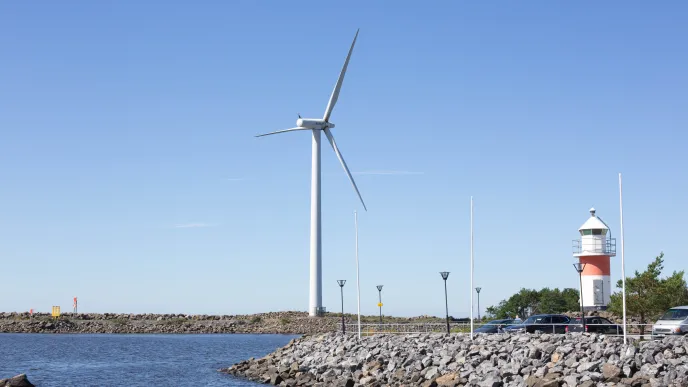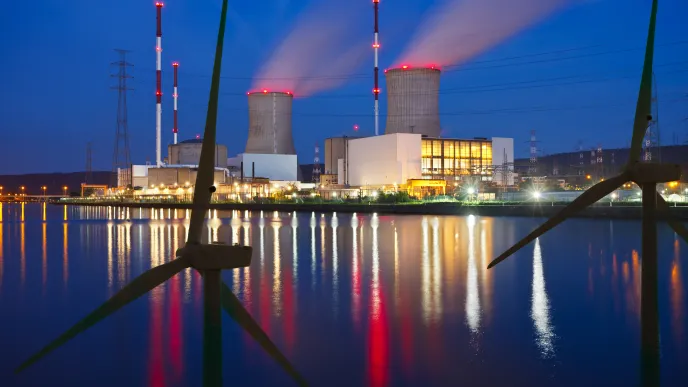Achieving global climate targets and limiting global warming to below 1.5°C requires a major shift from fossil fuel-based energy to renewable energy. In industry and long-haul transport, that requires renewable electricity-based fuels and chemicals (e-fuels and e-chemicals).
LUT University’s junior researcher Tansu Galimova has investigated essential factors in the strategic planning of e-fuel production, infrastructure development, and carbon dioxide sourcing to enable the cost-effective scale-up of green e-fuels and e-chemicals. These factors must be carefully considered by policymakers and energy planners when developing policies, strategies, and roadmaps for achieving net-zero emissions.
“This insight is relevant for many countries with climate commitments and plans to substitute fossil fuel consumption with green e-fuels. While production costs often dominate discussions, transport and infrastructure costs will likely affect the feasibility of such projects,” says Galimova.
The dissertation outlines how the global energy sector will develop by 2050:
The demand for e-fuels and e-chemicals will surge
The findings suggest that the demand for e-fuels and e-chemicals will increase significantly, from 3,690 TWhth in 2030 to 43,250 TWhth in 2050. In contrast, the total fuel demand, including fossil and bio-based fuels, is expected to decrease slightly due to increasing energy efficiency and electrification.
Carbon dioxide will be captured at scale in various ways
Producing e-fuels at scale will require 6.1 Gt of carbon dioxide annually by 2050. Around 40% of that could be sourced from sustainable and unavoidable point sources, including cement plants, pulp and paper mills, and waste incinerators, and the rest must be captured from the air.
A case study demonstrated that integrating point source carbon dioxide capture can reduce costs, improve resource efficiency, and generate socioeconomic benefits. In the case of Finland, e-methanol production costs were lower when carbon dioxide was transported from a point source capture site to renewable electricity generation sites compared to scenarios where electricity or hydrogen was transported to carbon dioxide point sources.
Trading could reduce fuel costs by 38%
The global fuel trade will persist, although at lower volumes than the current fossil fuel trade, due to the wide availability of renewable resources. According to Galimova, trading could reduce fuel costs by 2–8% globally, depending on the year and the fuel, and by up to 38% for individual countries, especially in Europe and Eurasia. Approximately 23–32% of the global e-fuel demand will be traded across regions, using both existing trading infrastructure, but also new systems.
e-Methanol transportation will be competitive
The dissertation also examines the costs of shipping and pipeline transport for green e-hydrogen and e-methanol. Long-distance hydrogen transport may not be competitive with local production, but e-methanol imports may be economically viable. Hydrogen is more likely produced and traded regionally, while other fuels are easier to ship across longer distances. These findings highlight the importance of selecting energy carriers for trade and import, considering the additional costs associated with transportation.
Domestic capacity will enhance energy security
International cooperation is essential for the development of energy systems, but building at least partial domestic e-fuel production capacity is also important for energy security. Domestic capacity supports the economy and helps keep costs under control. It also reduces dependence on nations that export fossil fuels and emerging exporters of green energy carriers, potentially contributing to international security and peace.
The Curious People newsletter shares our solutions for helping build resilient communities, industry, and businesses while promoting the energy transition and the regenerative use of natural resources.
The methanol economy may prove more relevant than the hydrogen economy
e-Methanol may emerge as the dominant e-fuel or e-chemical due to its high versatility. It can be converted into gasoline, dimethyl ether, kerosene-based jet fuel, and bulk chemicals. Thus, it serves not only as a potential fuel for shipping but also as a raw material for other products and a crucial feedstock for industry. Therefore, Galimova expects the concept of a methanol economy to become more relevant than the widely discussed hydrogen economy.
In summary, Tansu Galimova’s dissertation demonstrates the importance of e-fuels and e-chemicals in future sustainable energy systems, especially for hard-to-abate segments in transport and industry. Strategic planning of transportation infrastructure, consideration of resource availability, and international trade will be key to accelerating the adoption of e-fuels and minimising their costs in the long term.
More information

Galimova will defend her doctoral dissertation Renewable electricity-based fuels and chemicals: demand, trading, and transportation in Lappeenranta 21 November at noon, in Auditorium 1318 and online.





